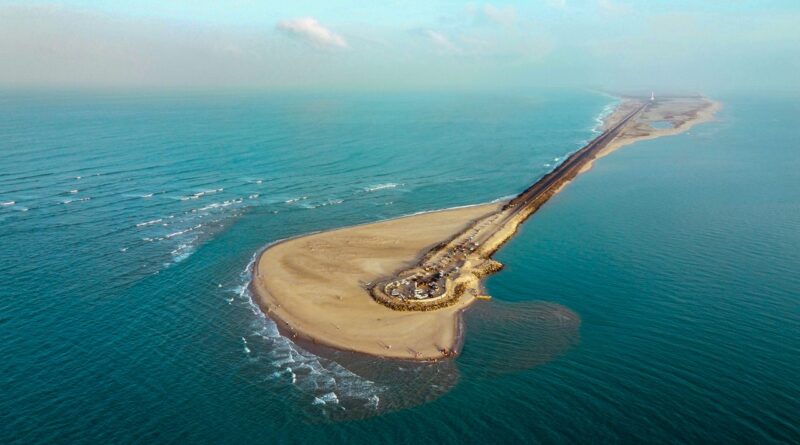Rameshwaram for Nature Lovers – From Pamban Bridge to Dhanushkodi
Rameshwaram for Nature Lovers – From Pamban Bridge to Dhanushkodi
Tucked away on the southeastern tip of India, Rameshwaram is best known for its spiritual significance—but there’s another side to this sacred town that often gets overlooked: its natural beauty. From turquoise waters and sandy beaches to scenic bridges and untouched coastal trails, Rameshwaram is a paradise for nature lovers. Whether you’re a photographer, a quiet wanderer, or a traveler seeking offbeat landscapes, this coastal gem will leave you mesmerized.
The Pamban Bridge – Where Sea and Sky Meet
As you enter Rameshwaram from mainland Tamil Nadu, you’re welcomed by one of the most iconic engineering marvels in India—the Pamban Bridge. Stretching across the azure waters of the Palk Strait, this bridge connects Rameshwaram Island to the mainland and offers breathtaking views, especially during sunrise and sunset.
There are two bridges here: the rail bridge, which is India’s first sea bridge, and the road bridge that runs parallel to it. Watching a train pass over the rail bridge as boats float gently below is a treat for the senses. Bird watchers can often spot migratory birds flying above the bridge, while photographers gather here to capture its perfect symmetry against the vast sky.
Dhanushkodi – The Ghost Town by the Sea
Just 20 km from Rameshwaram town lies Dhanushkodi, a place that feels like the edge of the world. Once a bustling town, it was completely destroyed in the 1964 cyclone and now stands in ruins—mysterious and haunting, yet strikingly beautiful.
The drive to Dhanushkodi is an experience in itself. You pass narrow coastal roads with the sea on both sides, and the salty breeze welcomes you long before you reach the destination. Upon arrival, you’ll see endless stretches of white sand, crystal-clear waters, and abandoned buildings that tell silent stories of the past.
Nature lovers will be enchanted by the pristine beauty of Arichal Munai, the southeastern tip of the country, where the Bay of Bengal and Indian Ocean meet. The shallow waters and unique land formations make it a surreal experience. You can walk for miles along the shore, with only the sound of waves and the occasional cry of a seabird for company.
Beaches in Rameshwaram – Tranquility by the Bay
Beyond the famous temples, Rameshwaram is home to a number of quiet beaches where you can spend hours watching waves roll in or collecting seashells along the shore.
-
Ariyaman Beach is one such peaceful spot, perfect for a family picnic or a walk along its clean, sandy coastline. It’s relatively less crowded, making it ideal for travelers seeking solitude.
-
Olaikuda Beach, near the main town, is known for its calm, shallow waters and coral reefs. If you’re lucky, you might spot starfish or tiny crabs scuttling around.
-
Kushi Beach is another lesser-known gem where you can watch local fishermen bring in their fresh catch and observe village life up close.
Gulf of Mannar Marine Biosphere – A Hidden Wonder
Rameshwaram lies within the Gulf of Mannar Biosphere Reserve, one of India’s richest coastal ecosystems. This protected area is home to coral reefs, seagrass beds, mangroves, and over 4,000 species of flora and fauna, including endangered sea turtles and dolphins.
Nature enthusiasts can explore this biodiversity hotspot through glass-bottom boat rides, snorkeling, or guided eco-tours from nearby areas like Mandapam. The shallow, clear waters make it easy to view marine life, especially in the nearby islands like Kurusadai Island (requires forest department permission to visit).
It’s a must-do for travelers interested in marine conservation or simply fascinated by the underwater world.
Bird Watching and Nature Trails
Rameshwaram’s unique location between the Arabian Sea and Bay of Bengal makes it a favorite stopover for migratory birds, especially during winter. If birdwatching is your passion, head to the Water Bird Sanctuary near Dhanushkodi, where you may spot painted storks, herons, egrets, and flamingos.
Apart from birdwatching, you can also enjoy short nature trails near the coastal belts and temple tanks (known as ‘Theerthams’). These areas attract birds, butterflies, and small reptiles, adding an extra layer of wildlife to your trip.
Sunrises, Sunsets & Starry Nights
Nature in Rameshwaram unfolds in magical ways. Sunrises at Dhanushkodi are simply unforgettable. The sky turns from shades of pink and orange to golden as the first light touches the quiet sea. Early risers can enjoy the moment in complete silence—perfect for meditation, photography, or just a moment of reflection.
Sunsets at Pamban Bridge are equally stunning, especially when the evening light bounces off the water and the silhouette of the bridge creates a picture-perfect frame.
At night, especially during new moons or power cuts, Rameshwaram offers clear skies and a blanket of stars. The absence of light pollution near Dhanushkodi makes it a great spot for stargazing or even astrophotography if you’re carrying your gear.
Eco-Friendly Travel Tips for Nature Lovers
If you’re visiting Rameshwaram for its natural beauty, here are a few tips to travel responsibly:
-
Avoid littering beaches and nature spots. Carry reusable water bottles and bags.
-
Respect local customs, especially near religious sites and fishing villages.
-
Wear reef-safe sunscreen if you’re planning to swim or snorkel near coral reefs.
-
Don’t touch marine life like corals, crabs, or turtles—observe from a distance.
-
Support local guides and eco-tour operators who promote sustainable tourism.
Final Thoughts
While Rameshwaram is known for its temples and spiritual legacy, it’s also a stunning natural destination that deserves attention from nature lovers and explorers. From the iconic Pamban Bridge to the quiet mystique of Dhanushkodi, every corner of this island town tells a story—written not just in legends, but in windswept dunes, coral reefs, and quiet waves.
Add your blog in this website:



